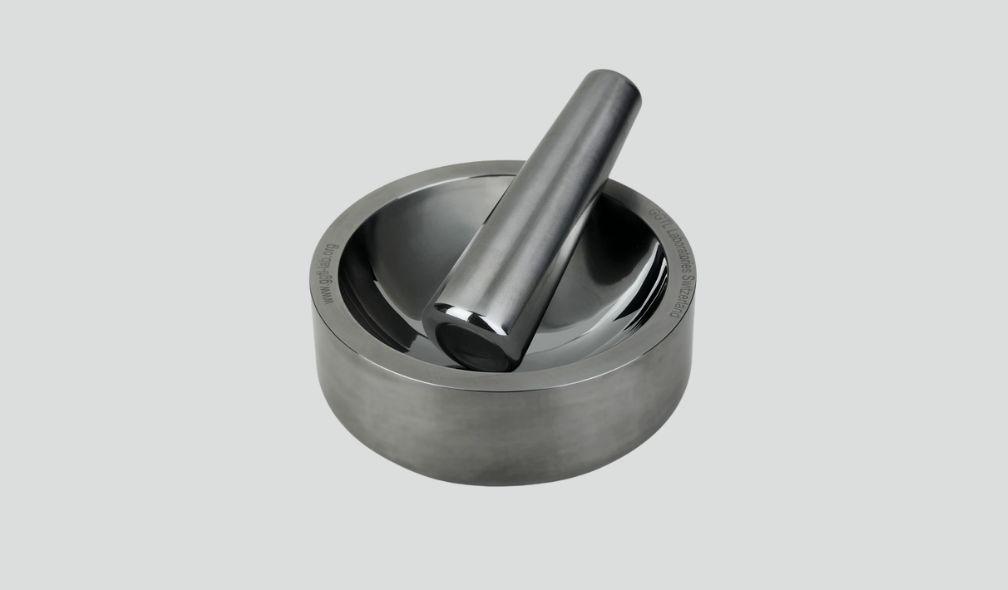
Introducing Tungsten carbide mortars
Tungsten carbide mortars offer much higher hardness than traditional mortars made with agate (chalcedony).
Typically, on the Mohs scale, it ranks around 9, which is the same as corundum, or a Vickers hardness of ≈ 2200 Hv.
While chalcedony, although very tough, has a Mohs hardness of ≈ 6.5+, which is slightly less than that of quartz, which is 7.
This is because it contains 1 to 20% of moganite, which is monoclinic SiO2 and has a Mohs hardness of 6, or an approximate Vickers hardness of between 850 and 1000 Hv.
Finally, agate also contains silanol groups (Si-OH).
A tungsten carbide mortar offers several advantages, the first being that it does not incorporate the inevitable traces of Si, Fe, Ca, and sometimes Cu, Hf, Zn, etc. found in chalcedony mortars, depending on the hardness of the material being ground.
Another advantage is its high hardness, which makes it possible to pulverise rocks with a hardness of up to ≈ 8.5 (i.e. chrysoberyl) without the addition of significant traces of other elements.
For rocks containing corundum (Mohs hardness of 9, i.e. 2000 to 2200 Hv), pulverisation is always possible, but some traces of W, C and Co will be added, as well as minimal quantities of other traces in the range of < 1ppm such as Ni, Zn, Cr, etc., i.e. which are undetectable by EDXRF in an oxide matrix.
This tungsten carbide mortar is an effective tool for preparing fine powders in geology as well as for preparing standards for EDXRF calibration.
- Diameter : ≈ 40 mm to ≈ 25 mm
- Mass : mortar ≈ 7'410 g; pestle ≈ 1'570 g
- Price (HT): CHF 1’780.00 + shipping
Full data sheet:
https://lnkd.in/d4DX4Y_h
